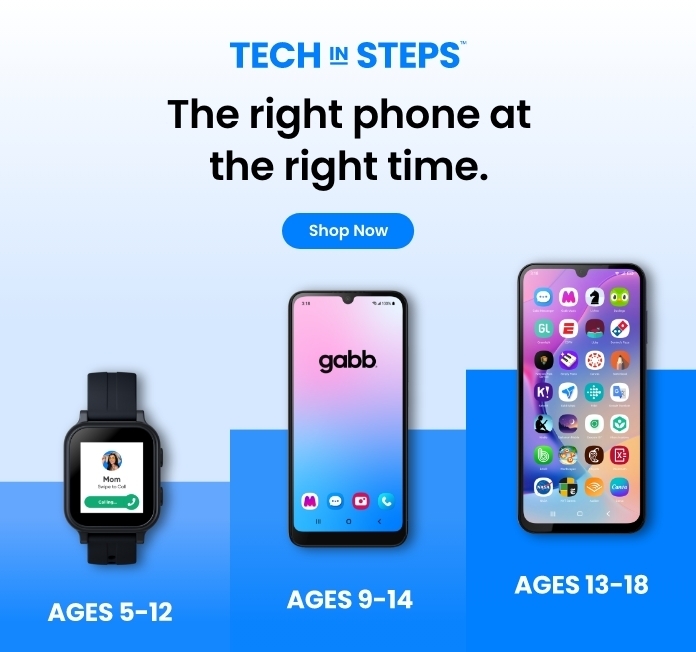Updated – Originally published November 24, 2021
Eating disorders in teens are serious. It won’t help anyone to pretend they’re not. But, with early recognition and the right support, recovery is absolutely achievable. If your child is dealing with an eating disorder, you’ve got this. Millions of parents have helped their child recover, you can too.
As a parent, you have the power to guide your kids through the pressures of body image and digital influences. The challenges are real but so are the opportunities. Below, we’ll walk through key concepts and actionable insights to spot the signs, understand the causes, and take steps toward prevention and healing in today’s complex digital world.
What Are Eating Disorders in Teens?
Eating disorders are serious mental health conditions that involve unhealthy behaviors around food, weight, and body image. If left unaddressed, they can lead to severe physical and emotional consequences.
According to one Harvard study, nearly one in ten people in the United States will experience an eating disorder in their lifetime, with many cases beginning in adolescence or young adulthood. Data available through the National Institute of Mental Health shows nearly 3% of U.S. adolescents (aged 13 to 18) are affected by an eating disorder: about 0.3% for anorexia nervosa, 0.9% for bulimia nervosa, and 1.6% for binge eating disorder.
Common types of eating disorders include:
- Anorexia nervosa: Characterized by extreme weight loss through restrictive eating, intense fear of gaining weight, and a distorted body image.
- Binge eating disorder: Marked by recurrent episodes of eating large amounts of food in a short time, often accompanied by feelings of shame or loss of control.
- Bulimia nervosa: Involves cycles of binge eating followed by behaviors like purging, excessive exercise, or fasting.
- Orthorexia: Characterized by an obsession with food quality (not quantity) and involves eating only foods perceived as healthy or “pure,” which can lead to rigid rules, anxiety around food choices, and nutritional deficiencies.
- Avoidant restrictive food intake disorder (ARFID): A condition where individuals avoid certain foods due to sensory issues, fear of choking, or lack of interest, leading to nutritional deficiencies without body image concerns.
These disorders can affect anyone, but they often emerge during the child and adolescent years. This time of rapid physical and emotional changes makes kids more susceptible to developing eating disorders. Long-term effects may include substance abuse, other mental health issues, and chronic health conditions.
Eating Disorders vs Disordered Eating
It’s easy to confuse eating disorders with disordered eating, but understanding the difference can be helpful for early intervention and your own peace of mind. Disordered eating refers to irregular eating habits that may harm health but don’t meet the full criteria for a clinical diagnosis. This could include skipping meals occasionally, yo-yo dieting, or emotional eating. While common — one meta-analysis showed some form of disordered eating in 22% of children and adolescents worldwide — it’s not as severe or persistent as an eating disorder.
Eating disorders, on the other hand, are diagnosable mental health conditions that dominate a person’s thoughts and behaviors, often requiring professional eating disorder treatment. They involve extreme emotions, attitudes, and actions around food and weight. For example, someone with disordered eating might cut carbs to lose a few pounds, while a teen with anorexia nervosa might severely restrict calories to the point of malnutrition.
The line can blur, especially in young adults, where disordered eating can escalate into a full disorder if not addressed. You might think of it as a spectrum with healthy eating behavior on one end, eating disorders on the other, and disordered eating filling the space in between. Knowing the signs and patterns that disrupt daily life can help parents take early action and prevent long-term complications.
“Eating disorders can affect every organ system in the body, and people struggling with an eating disorder need to seek professional help. The earlier a person with an eating disorder seeks treatment, the greater the likelihood of physical and emotional recovery.”
-National Eating Disorders Association, 2018
What Causes Eating Disorders in Teens?
Eating disorders in teens don’t have a single cause. They’re influenced by a mix of biological, psychological, and environmental factors. Genetics play a role too: teens with a family history of eating disorders or mental health issues are at higher risk. Psychological factors like low self-esteem, perfectionism, or trauma can also contribute.
Environmental triggers are significant, especially during the vulnerable teen years. Societal pressures for thinness, peer comparisons, and cultural ideals of beauty can distort a teen’s relationship with food. The COVID-19 pandemic exacerbated this, with eating disorder-related health visits more than doubling among those under 17 from 2018 to 2022. Stress from isolation, disrupted routines, and increased screen time during lockdowns played a part in this surge.
Other risk factors include participation in sports emphasizing weight (like gymnastics or wrestling), bullying, or co-occurring conditions like anxiety or depression. Understanding these causes helps parents create supportive environments that promote positive body image and healthy habits.
Is There a Correlation Between Social Media and Eating Disorders in Teens?
Yes, research shows a strong correlation between social media use and eating disorders in teens. Platforms like Instagram and TikTok expose young users to idealized body images, filters, and trends that can fuel body dissatisfaction and disordered eating behaviors. Studies indicate that greater use of appearance-focused social media is linked to increased eating disorder symptoms, with passive scrolling leading to upward social comparisons and negative self-perception. For instance, exposure to “fitspiration” or “thinspiration” content — images promoting extreme thinness or fitness — can heighten body image issues and encourage restrictive diets.
The COVID-19 pandemic amplified this, as teens spent more time online, leading to a rise in eating disorder diagnoses. Algorithms often push content that reinforces these ideals, creating echo chambers where harmful messages thrive. Pro-eating disorder communities, though sometimes moderated, still exist and can glamorize dangerous behaviors.

On a hopeful note, some platforms have made improvements. For example, if a user searches for a term like “thinspiration” on Instagram, they’re now prompted with resources for help, including links to the Alliance for Eating Disorders hotline and website. Instagram has also expanded support features, such as blurring sensitive content and directing users to expert advice.
These changes are awesome. But dangers still exist. Additional research shows that the algorithms fueling these platforms still recommend harmful videos or images to vulnerable teens, and enforcement isn’t perfect. If you’re concerned about your child and feel social media has had a negative impact, limiting exposure through safe tech choices can make a big difference.
Signs and Symptoms of Eating Disorders in Teens
Spotting eating disorders early makes a big difference. Common signs include dramatic weight loss, obsession with calories or dieting, avoiding family meals, excessive exercise, or frequent bathroom visits after eating (which might suggest purging). Emotional indicators might be mood swings, withdrawal, or constant body checking in mirrors.
Physical symptoms vary by disorder. For example:
- Dry skin and hair loss in anorexia
- Dental issues from vomiting in bulimia
- Gastrointestinal problems in binge eating disorder.
If your teen expresses fear of gaining weight or dissatisfaction with their appearance despite being healthy, it’s worth a conversation.
Treating Eating Disorders: Options for Recovery
Treating eating disorders often requires a multidisciplinary approach, including medical monitoring, therapy, and nutritional counseling. Family-based therapy (FBT) is effective for teens, involving parents in meal planning and behavior support. Cognitive behavioral therapy (CBT) helps address distorted thoughts about food and body image.
Early intervention (within the first few years) has shown significantly better recovery rates. Severe cases may need hospitalization for stabilization. Long-term recovery focuses on building a healthy relationship with food and preventing relapse, sometimes incorporating medication for co-occurring conditions like depression.
Resources like National Eating Disorders Association (NEDA) offer helplines and directories for specialists as well as a free online screening tool to identify if it’s time to get professional support. Recovery is possible. There is always hope. But it can take time and, in some cases, professional guidance.
How Parents Can Help Prevent and Address Eating Disorders
The best place to start is modeling positive behaviors: eat balanced meals together, avoid weight-focused talk, and encourage activities that build self-esteem beyond appearance. Taking advantage of (or creating) opportunities to teach media literacy will help your kids question edited images and unrealistic standards on social media. This has become even more critical in the age of AI.
Questioning the media you see:
Who made this? How can you tell?
Why did they make it? Why do you think that?
What is the creator’s point of view? How do you know?
How do I know if this is true? Why do you think that?
Who might benefit from this message? Who might be harmed by this message?
(National Association of Anorexia Nervosa and Associated Disorders, 2021)
If you suspect an issue, approaching with empathy is likely to lead to better conversations: “I’ve noticed you’ve seemed worried about food lately—want to talk?” If your gut says things are serious, seek professional help early.
To reduce risks from digital influences, consider making a tech plan for your family. By staying informed and proactive, we can guide our teens toward healthier futures. If you have questions, drop them in the comments — we’re here to support you.










Success!
Your comment has been submitted for review! We will notify you when it has been approved and posted!
Thank you!